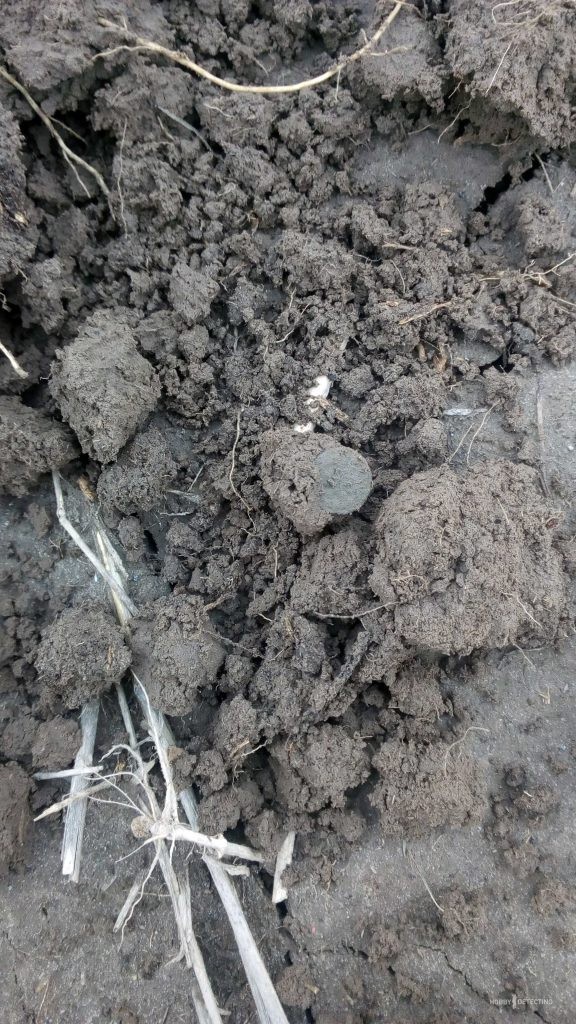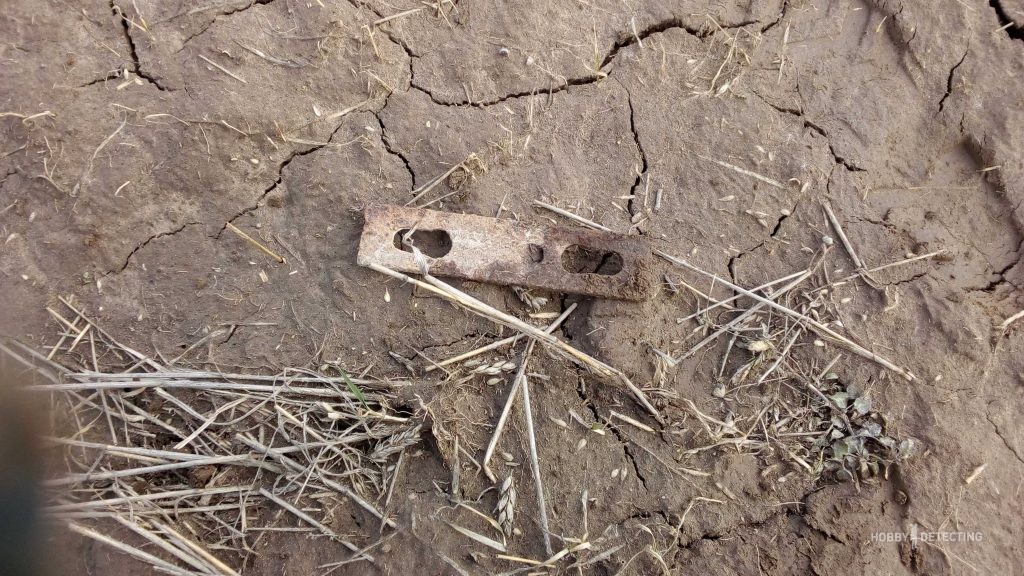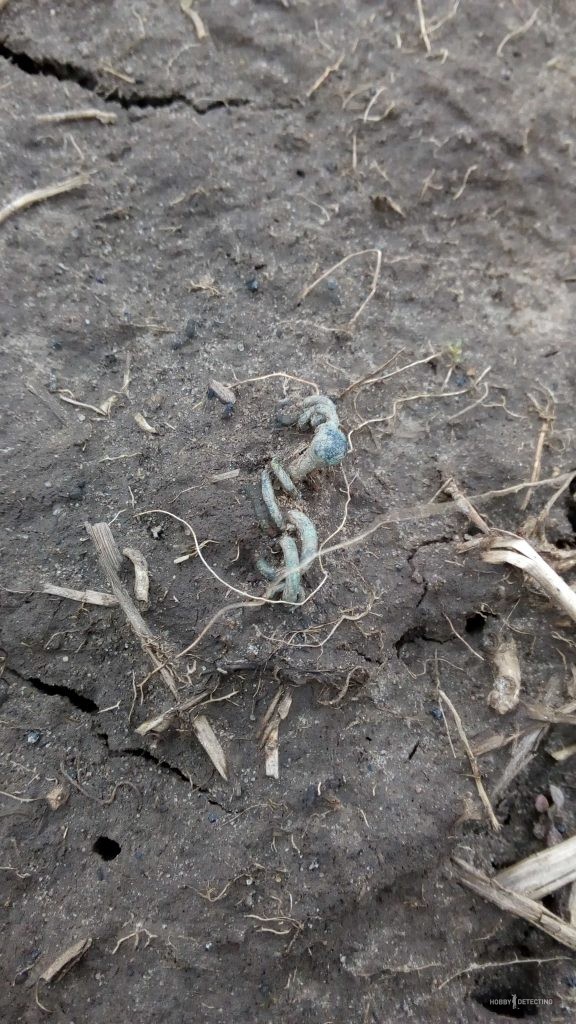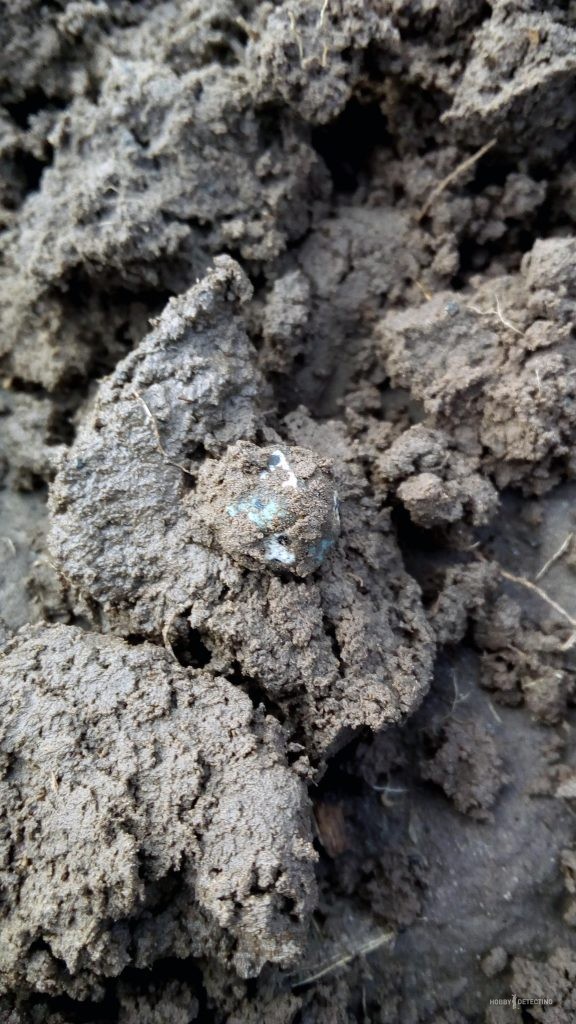Simplex Plus. Looking for scales in a plowed field
So I decided to test Simplex for scale detection in real conditions. The fact that this MD sees scales in aerial tests is clear to me, but whether it can find such small targets in a plowed field is a question with an attitude towards a super task. So I took the device, loaded it into the car and drove to one proven and interesting place. In previous seasons, scales were regularly found in that place, and there was always a result for larger finds, so the place was excellent for testing. I arrived and saw that the field was already dry, a flat surface, like on a beach, and also wet soil, in general, the testing conditions were almost laboratory. The only obstacle was the strong piercing wind.
Goals and objectives of the trip:
- Spend at least 4 hours on the mine.
- Find scales.
- Check the device's response to looped iron.
- Well, at the same time, have a good time and dig up something interesting.
I reached the edge of the field, got out, the wind was whistling, the car was already swaying. Well, since I came to test, it means that the test should take place in the most approximate conditions. I know from my own experience that the first metal detector is bought without headphones, so I decided to walk around listening to the MD speakers. Also, following the example of most newcomers to instrument search, I turned off the ferrous metal signals by discrimination.
At the very edge of the field there are the remains of a plowed landfill, so for comfortable digging you need to walk about 50 meters. I turn on the device and with the first signal I give a big thumbs up to the creators of the device for a very good and loud sound. For example, with ICQ or Fisher, with such a strong wind, you have to strain your ears to hear deep signals. The sound is excellent, and this is provided that the speaker is hidden under the cover for the unit.

The first interesting find was the GRP half bayonet, the signal was good, a confident depth of half a fiskar bayonet. Coin saving is mediocre, but this is already interesting. The coin is small, but the device caught it well and efficiently.

The second signal was a coin from among those that are best not found. After such finds, one involuntarily wants to howl in despair, pack up the instrument and go home, and go on a drinking binge out of grief. Judging by the size and level of wear, and also by the barely readable profile of the face on one side of the coin, these were 20 kopecks from Catherine. Mmmm yes. A sigh of despair and sadness. Well, okay, I move on in search of scales.
Regarding the looped pieces of iron. Those that lie in huge numbers and multitudes in agricultural fields. These are spare parts for trailer hitches for tractors; it will be necessary to clarify what they are called according to the nomenclature. And for those who don’t know what this piece of hardware is called, I’ll tell you. This is part of the traction plate chain. So this is a chain plate. Now, all the diggers in our country know these records for their insidious and substitution signal. Therefore, any new metal detector simply needs to be tested for its reaction to chain plates. The ability of the devices to give an intelligible signal for detecting a chain plate allows the digger to save not only time, but also his own precious nerves.

So what? Testing for the signal from the chain plate showed that if the piece of iron lies flat, the device sees it as a good and clear copper signal. Turning the wiring 90 degrees with the device does not change the signal. Still the same excellent noble signal. Whereas, if the plate lies sideways or not straight, then the device either confidently cuts it off, or, as it should be when changing the angle of the wiring, clearly shows that it is iron. So, according to this indicator, Simplex Plus is confidently outperforming its competitors in its price category.
But oh well. I continue to look for scales. I walk, search, dig. A lot of garbage, ubiquitous wire, traffic jams, debris. And among them there are good finds.

Cross, button, weight. Then the horse signaled, looked closer, some kind of decoration. I took it out, as if it were part of a Finno-Ugric outfit. It’s a pity that it’s in such a state, but this is a plowed field, you can’t expect anything else. Then a tin button, the kind you usually find here with a crown, a sign that the regiment is patronized by an imperial person. But today it was just a button, without a design.
As a result, the scale test was not confirmed. Either this is a really difficult task for an entry-level device, or Grandfather Khabar today issued scales according to the order, and I was not on the list. And this happens on the cops. As we understand, for the accuracy of any testing data, the experiment must be carried out many times. And draw conclusions based on general data. Therefore, I plan to test Simplex Plus in another field in the near future. There were definitely always scales there, or almost always.



